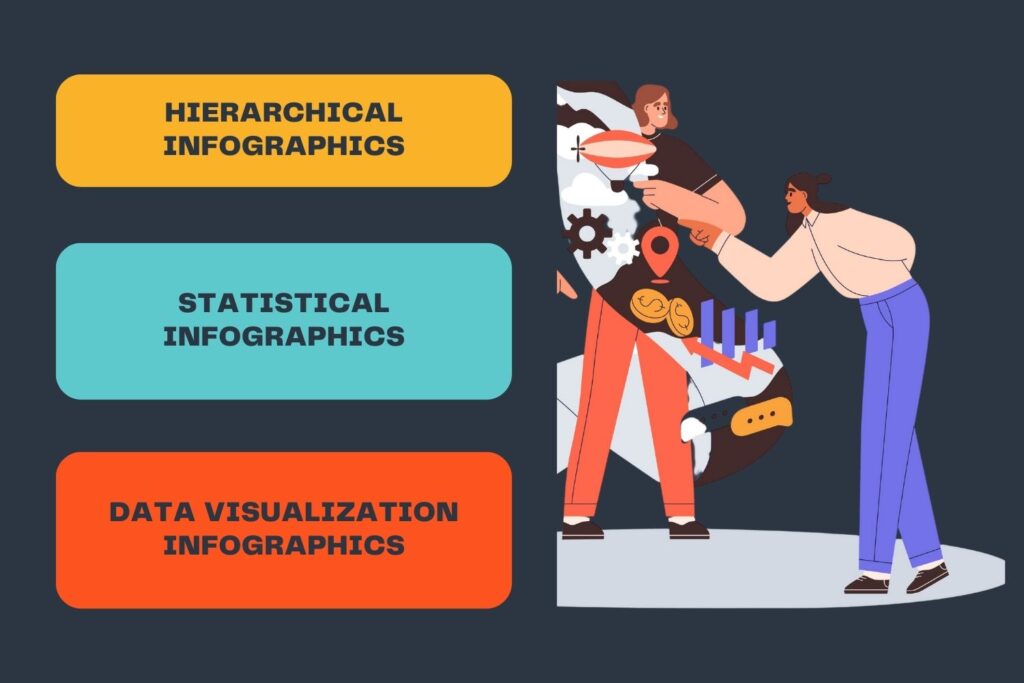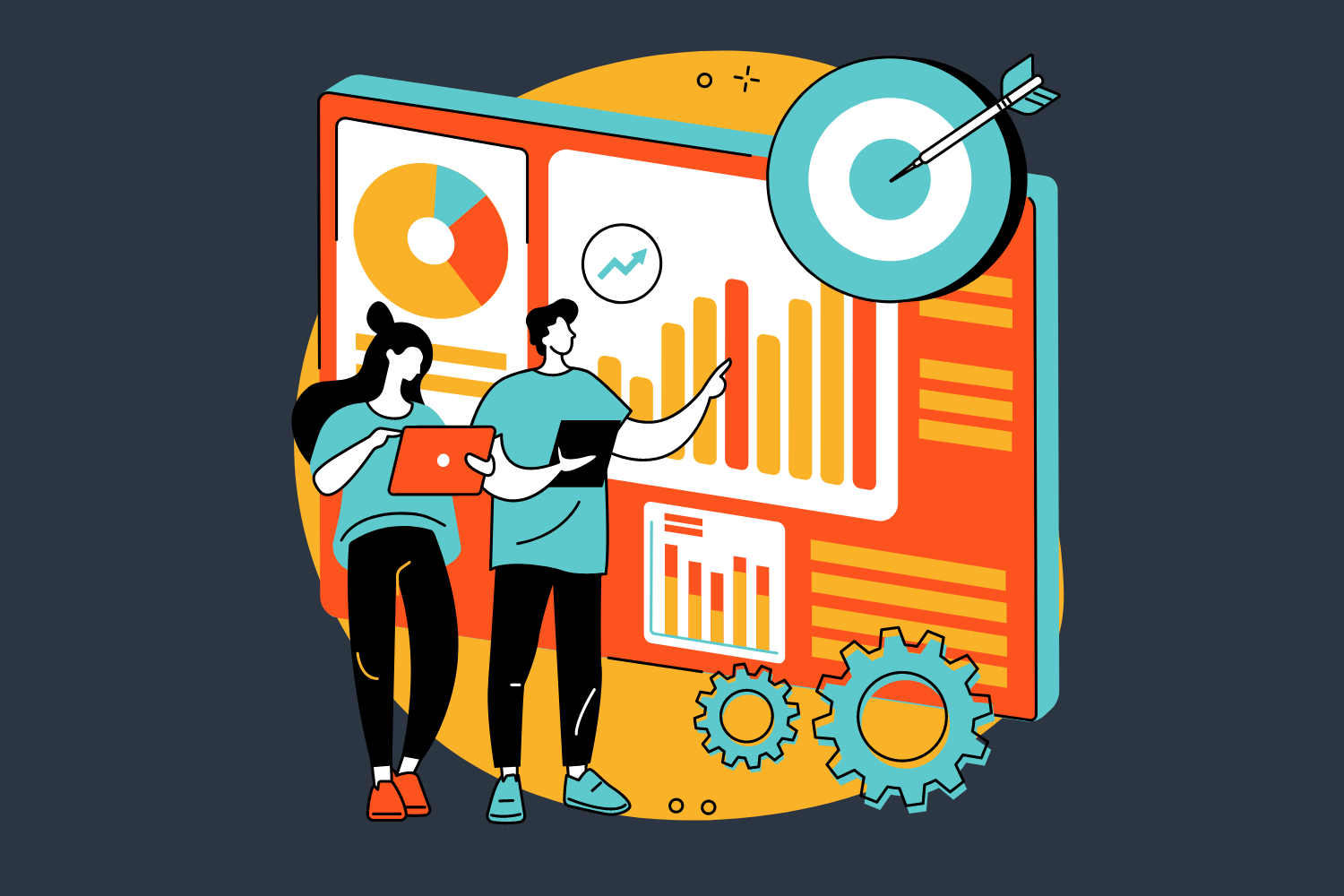Infographics: The Different Types and Their Benefits
There are so many different types of infographics available for companies to use out there. This guide will cover each one and how they can benefit you.
When we were young, many of us liked to pick books out to read based on the pictures they had inside. Since words weren’t our forte, we relied on the pictures to give us a better idea of what was happening. As we grew up, we started to learn more and more words, which pushed us toward books that didn’t have any pictures.
However, pictures are still great tools for people of all ages to better understand and visualize concepts portrayed to them through words. This is why so many websites use all kinds of visuals throughout their pages. Because of this, the art of the infographic has developed quite a bit throughout the years. In fact, there are many different categories of these images that any given company can use.
While many tricks for making your website stand out exist, infographics are among the most subtle and effective. If you’d like to start using them within your company’s website, read on. This guide is here to cover each of the different types of infographics that exist, as well as how each one could benefit your business. With this information, you can enhance your online storefront in a way that significantly boosts your overall conversations.

Informational Infographics
Let’s start with one of the most basic types: the informational infographic. These aim to break down complex concepts or ideas into easily consumable parts. They often use a combination of text, icons, and images to convey a message or explain a difficult topic.
This type of infographic is especially useful when trying to educate or inform your audience about a subject. By removing barriers to understanding, it can lead to higher engagement with the presented details and retention. Through visuals and concise language, informational infographics aid in clarifying material for an enhanced learning experience, which leads to a more informed purchase.
List Infographics
List infographics are another basic option that provides a visually appealing and easy-to-follow format for organizing and presenting information. They typically serve to summarize any content presentable as a series of steps, ranking items, or listing essential points, making them perfect for longer pieces of text-driven content.
For busy individuals, especially those in the business world, list infographics can save time and keep them informed about relevant content. This is because they don’t have to sift through lengthy articles. By using visuals, bullet points, and simple data, list infographics deliver the crucial information you need in a concise and engaging manner.
Process Infographics
If your list of steps is too complex for a standard list infographic, process infographics might be the better option. These images guide the reader through step-by-step instructions, explaining the intricacies of a method or workflow.
The presence of charts, diagrams, and icons coupled with clear, concise text makes these infographics incredibly useful for describing complicated procedures. That’s what makes these infographics great for employees and other people who follow complex processes. They can quickly refer to this graphic for important info instead of digging through the original source.
Plus, the structured visual representation of a process can further contribute to easier retention of information. When explaining particular methods, systems, or workflows, process infographics streamline information, allowing readers to follow along effortlessly and understand the bigger picture.

Timeline Infographics
When steps and processes have to represent a longer period, timeline infographics are a suitable option. These graphics walk readers through the history or evolution of a subject, making them ideal for discussing the past, present, and potential future in a chronological manner. They also simulate notable gaps between events.
These infographics are visually interesting and straightforward to grasp, as they use horizontal or vertical lines that connect data points representing specific events or occurrences. Additional visuals, such as icons, images, and text boxes, can supplement the timeline for context and offer a more comprehensive understanding of the subject matter. This type of infographic is an excellent tool for showcasing a product’s development, portraying the growth of an industry or telling a story over time.
Geographic Infographics
Sometimes you need more than a standard picture to represent something. When you have locational information, you can opt to use geographic infographics. They primarily showcase location-based data through the usage of detailed maps and charts. With the help of color and shading, these infographics can convey regional trends, demographic distributions, and other valuable insights.
Businesses can take advantage of geographic infographics to illustrate market trends, customer behavior, or sales patterns across specific locations. By visually representing this information, geographic infographics allow for easier analysis and understanding of the data.
Comparison Infographics
Another fairly common infographic type that has quite a few benefits is the comparison infographic. It highlights similarities, differences, or relationships between entities, products, or concepts. Typically, these infographics use a side-by-side design or split layout to emphasize the comparison.
The use of icons, images, and text helps distinguish each subject in the comparison. Whether comparing the pros and cons of different business strategies to showcasing competing products, these infographics offer a quick way to analyze contrasts and make informed decisions.

Hierarchical Infographics
If your comparisons need to show the hierarchical nature between elements, hierarchical infographics are your go-to option. These images display the relationship between elements in the form of an organized structure. They often use tree diagrams, pyramids, or concentric circles to represent different levels in a hierarchy.
The visual representation of these relationships is an intuitive way for readers to understand how elements connect and interact within a system. Businesses can employ these infographics to convey organizational structures, illustrate product categories, or explain the infrastructure of a well-oiled machine.
Statistical Infographics
One of the most important infographic types is the statistical infographic. The reason why they’re so vital is that they’re an excellent way to present quantitative data in an easily digestible format. This is something that’s typically not easy to achieve with raw data. Because of that, these infographics are quite challenging to create.
However, through the use of charts, graphs, and icons to showcase numerical information, it’s possible to make complex numbers much easier for the average person to digest. In most cases, bar charts, pie charts, and line graphs are among the most common visual elements in these graphics.
The use of color, size, and shape helps make comparisons between data sets visually appealing and easy to understand. These infographics can condense large amounts of information into understandable images, making them advantageous for decision-makers and time-conscious professionals.
Data Visualization Infographics
Unfortunately, some data sets are too complicated for a standard statistical infographic to represent. When that happens, you need to employ the use of data visualization infographics. These are perfect for translating some of the most complex data sets and statistical information into easy-to-understand visuals.
While data visualization infographics still use some charts and graphs, they focus more on simple words and numbers to get the main point across. This helps clean up the abundance of multiple complex charts, making the information even more digestible for the average person.
Because of this, this type of infographic can make even the most number-heavy reports engaging for your audience, allowing them to grasp the implications of the data accurately. Data visualization infographics can enhance business presentations and industry reports or even help disseminate research findings among colleagues and stakeholders.

Resume Infographics
Even though they’re a bit more niche, resume infographics are becoming quite popular these days. In today’s competitive job market, standing out from the crowd is essential. Fortunately, these infographics offer an innovative way to showcase your professional history, skills, accomplishments, and unique attributes by using a combination of text and graphics to create a visually captivating document.
The eye-catching presentation can help capture the attention of employers, setting your application apart from traditional text-based resumes. Additionally, resume infographics can also help those in creative industries demonstrate their design and visual communication skills. While they might not help businesses directly, they can aid those in the business world secure jobs more easily. Plus, businesses can use some of the same techniques to spruce up their own “About Us” pages.
Interactive Infographics
Last but certainly not least, we have interactive infographics. This innovative graphic can take visual communication to the next level by combining engaging visuals with interactive elements that allow the user to manipulate the content and explore the information at their own pace. By incorporating interactivity, these infographics can guide the audience through a story or data set, allowing them to explore different points of view or discover hidden details.
This helps make them more effective than any static infographic we’ve covered so far. That means interactive infographics will likely be the way of the future. While they still have a way to go to become more viable, they have potential. Therefore, this is an infographic type you should keep an eye on and toy around with as the years go by.
